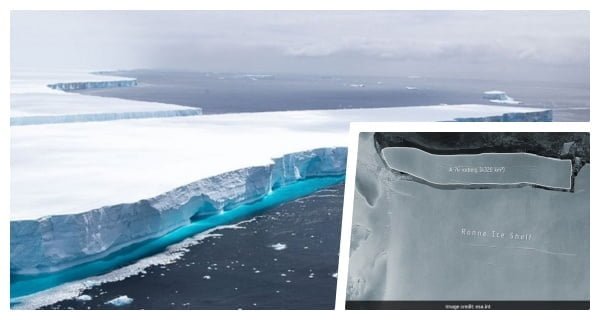
London: A huge mountain of ice has broken apart from Antarctica, which is called an ice mine. It is being described as the world’s largest iceberg. This iceberg is 170 kilometers long and is about 25 kilometers wide. The satellite images of the European Space Agency show that this giant ice piece has been broken by the Ronne Ice Shelf, located in the western part of Antarctica. There is an atmosphere of panic in the world due to the breaking of this iceberg. After breaking this iceberg, now Weddell is swimming freely in the sea. The full size of this giant iceberg is 4320 km. It has become the largest iceberg in the world. It is named A-76. The picture of the rupture of this iceberg has been drawn by the European Union satellite Kaepernickus Sentinel. This satellite monitors the Earth’s polar terrain. The Antarctic Survey Group of Britain first told about the breakup of this iceberg.
According to the National Snow and Ice Data Center, the breakdown of this iceberg will not directly increase the sea level but may increase the water level indirectly. Not only this, it can slow down the speed of glaciers and the currents of ice. The Center warned that Antarctica is warming faster than other parts of the Earth. In Antarctica, there is so much water in the form of ice, which, when melted, the sea level can rise up to 200 feet across the world.

Scientists believe that A-76 is broken not due to climate change but due to natural reasons. Scientist Laura Gerrish of the British Antarctic Survey Group tweeted that both A-76 and A-74 have separated due to natural causes after the completion of their period. He said that there is a need to keep an eye on the speed of the breaking of the icebergs, but now they are expected to be broken. According to Nature magazine, after the year 1880, the average sea level has increased by 9 inches. One-third of this water comes from the melting of ice in Greenland and Antarctica.





















































